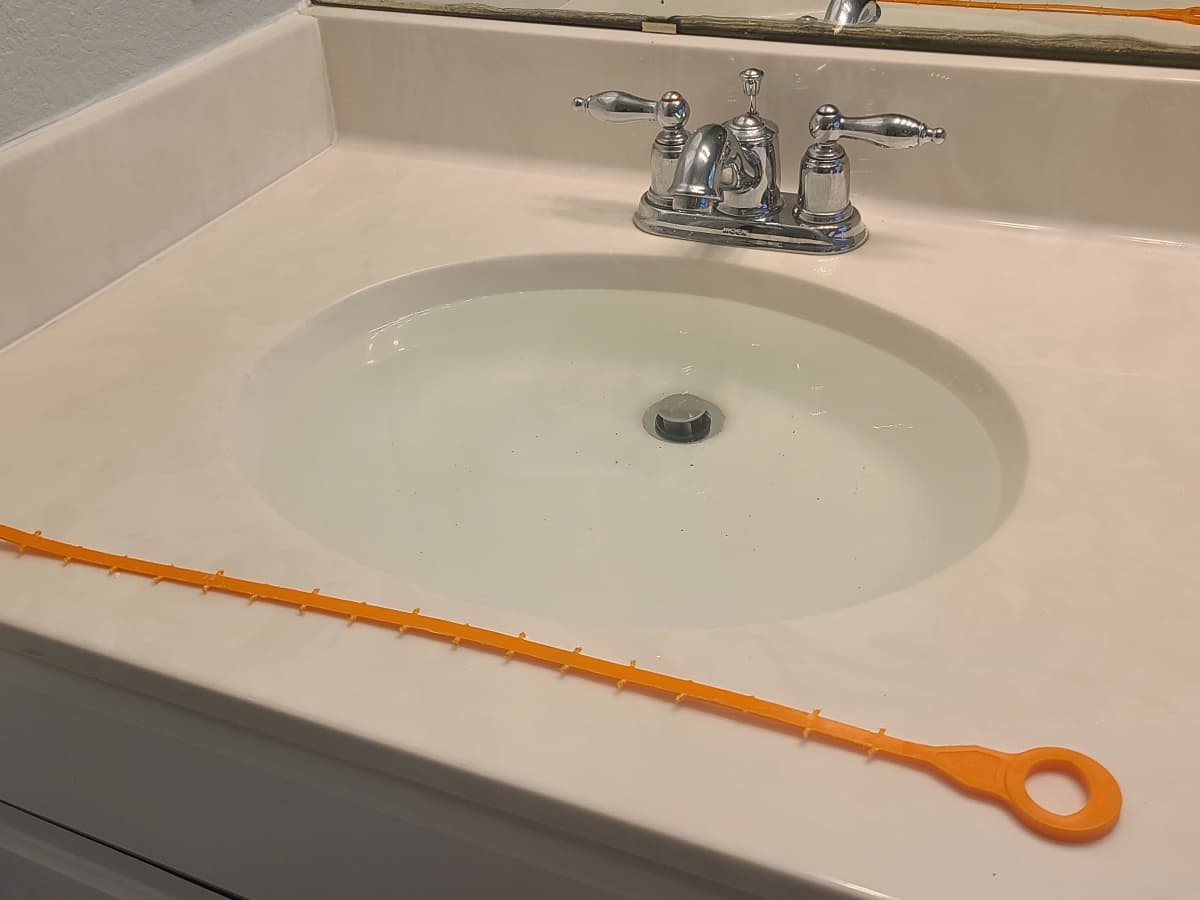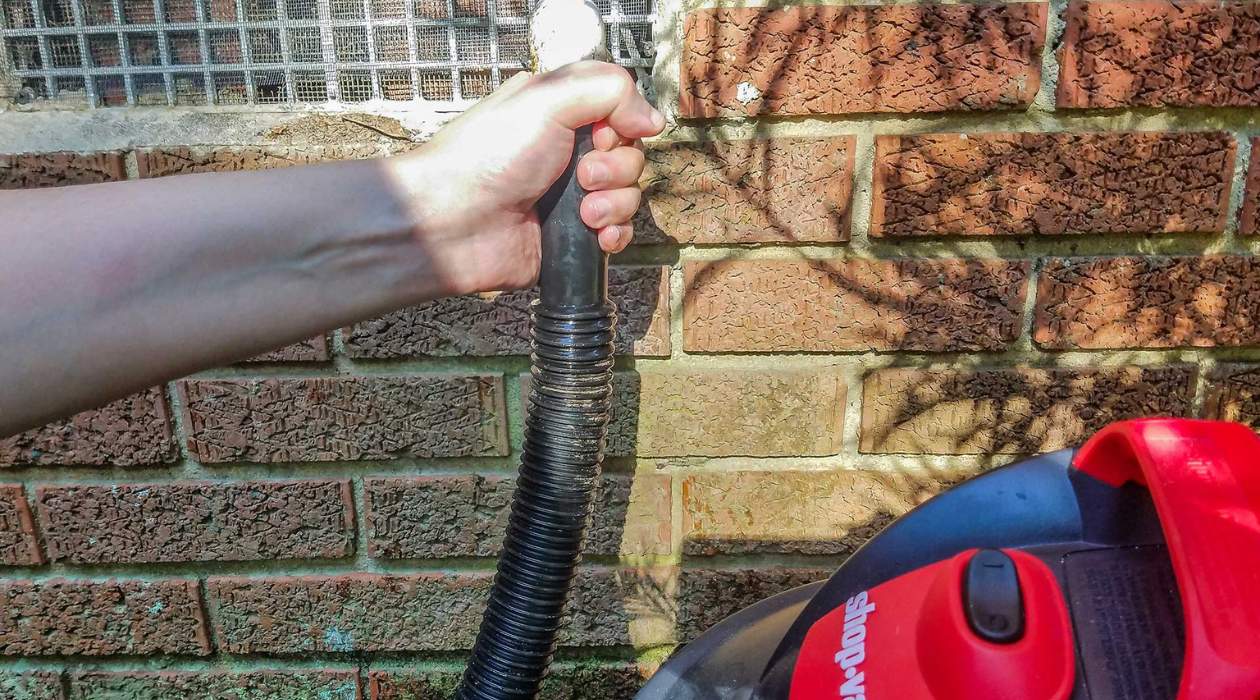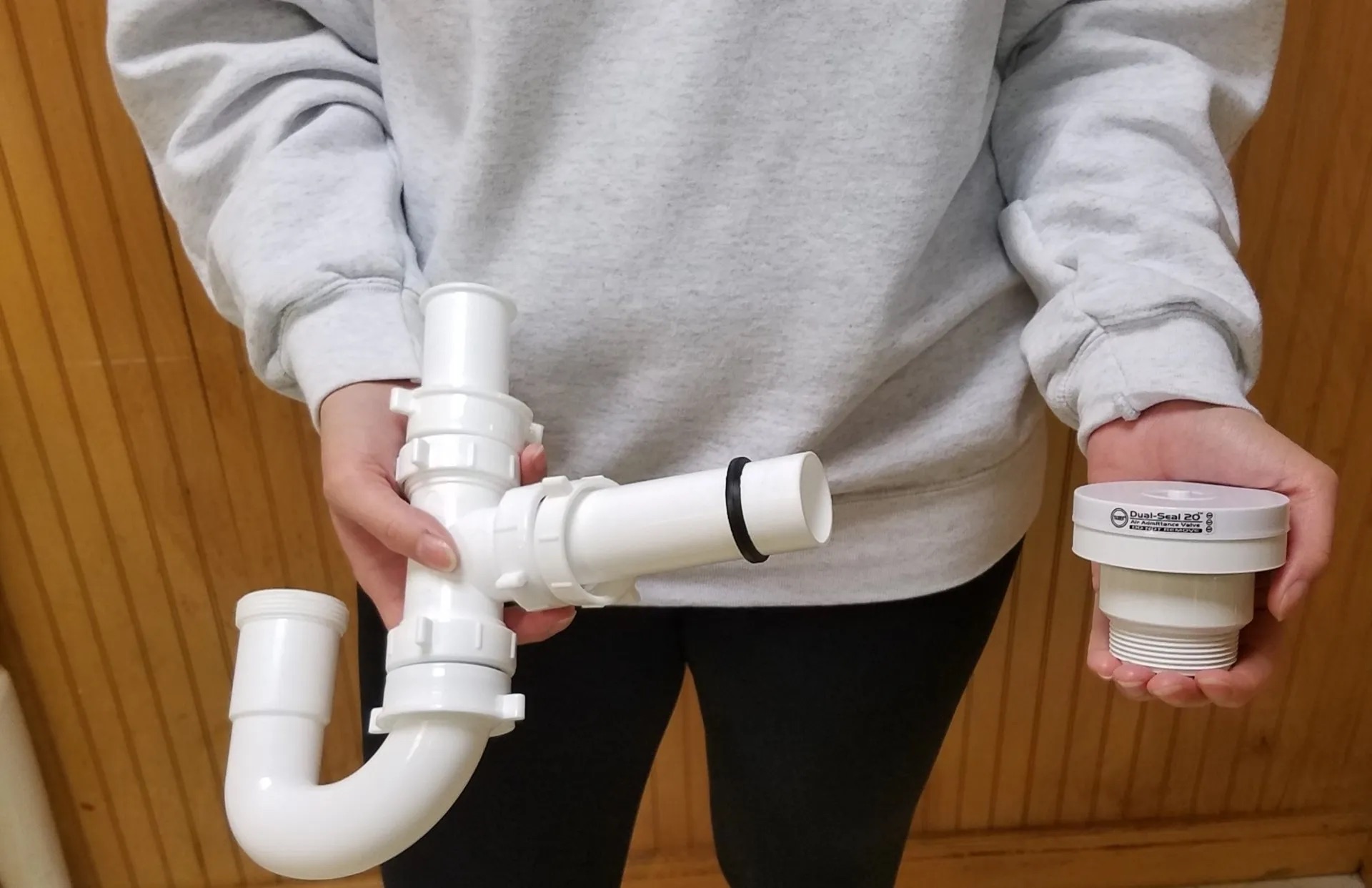

Articles
How To Clear A Slow-Draining Bathroom Sink
Modified: August 27, 2024
Learn effective methods to clear a slow draining bathroom sink with our informative articles. Discover simple DIY solutions and expert tips for unclogging your sink quickly.
(Many of the links in this article redirect to a specific reviewed product. Your purchase of these products through affiliate links helps to generate commission for Storables.com, at no extra cost. Learn more)
Introduction
A slow draining bathroom sink can be a frustrating and inconvenient problem to deal with. Not only does it cause water to accumulate in the sink, but it can also lead to unpleasant odors and even damage to your plumbing system if left untreated. Understanding the common causes of a slow draining bathroom sink and knowing how to effectively clear it can help you eliminate this issue and restore your sink to optimal functionality.
There are several reasons why a bathroom sink may drain slowly. The accumulation of hair, soap scum, and other debris in the drain pipe is one of the most common culprits. Over time, these substances can build up, forming a clog that restricts the flow of water through the pipe. Other factors that can contribute to a slow draining sink include the improper installation of the drain pipe, the presence of hard water deposits, or the growth of mold and mildew.
To clear a slow draining bathroom sink, you will need a few basic tools and materials. These include a plunger, a pipe wrench, a bucket, a wire hanger, a drain snake, and a mild drain cleaner. It is important to note that if you have a septic system, you should avoid using chemical drain cleaners, as they can be harmful to the bacteria in your septic tank.
This article will provide a step-by-step guide to help you clear a slow draining bathroom sink. Additionally, it will explore alternative methods that can be used if the clog is stubborn or difficult to remove. Furthermore, it will provide preventive measures that you can take to maintain a clear bathroom sink drain and avoid future issues. By following the instructions and suggestions outlined in this article, you will be able to effectively address a slow draining bathroom sink and restore proper drainage in your bathroom.
Key Takeaways:
- Regular maintenance and preventive measures, such as using a drain strainer, flushing the drain with boiling water, and educating household members on proper sink usage, can help prevent slow draining bathroom sinks and minimize the need for unclogging efforts.
- When dealing with a slow draining bathroom sink, utilizing tools like a plunger, pipe wrench, wire hanger, or drain snake can effectively dislodge and remove clogs. If traditional methods fail, alternative methods such as removing and cleaning the pop-up stopper or using a wet-dry vacuum can be considered.
Common Causes of Slow Draining in Bathroom Sinks
A slow draining bathroom sink can be caused by a variety of factors. Understanding the common causes of this issue can help you identify the problem and take the appropriate steps to fix it. Here are some of the most common causes of slow draining in bathroom sinks:
- Build-up of hair and soap scum: Over time, hair and soap scum can accumulate in the drain pipe, creating a clog that restricts water flow. These substances can easily get trapped in the P-trap or further down the drain, leading to slow draining.
- Hard water deposits: If your water supply contains high levels of minerals, such as calcium and magnesium, it can result in the formation of hard water deposits. These deposits can build up inside the pipes and gradually restrict the flow of water, causing a slow draining sink.
- Improper installation: In some cases, a slow draining sink may be the result of improper installation of the drain pipe. If the pipe is not angled correctly or if there are any misalignments or leaks, it can impede the drainage process.
- Mold and mildew: The moist environment of a bathroom can promote the growth of mold and mildew. If these organisms start to grow inside the drain pipe, they can form a blockage and hinder the flow of water, leading to a slow draining sink.
- Foreign objects: Sometimes, small objects such as jewelry, toothpaste caps, or cotton swabs can accidentally fall into the sink drain and get lodged in the pipe. These objects can create a partial blockage and cause the sink to drain slowly.
Identifying the root cause of the slow draining issue is crucial for effective resolution. By understanding these common causes, you can narrow down the problem and choose the appropriate method to clear the clog and restore proper drainage in your bathroom sink.
Tools and Materials Needed
Gathering the necessary tools and materials before tackling a slow draining bathroom sink can streamline the process and ensure that you have everything you need to effectively resolve the issue. Here is a list of the tools and materials you will need:
- Plunger: A plunger is a versatile tool that can be used to create suction and dislodge clogs in the drain pipe.
- Pipe wrench: A pipe wrench is a specialized tool used to grip and turn pipes and fittings, providing leverage to loosen and remove any obstructions.
- Bucket: A bucket is essential for catching any water that may overflow or spill out during the clearing process.
- Wire hanger: A wire hanger can be straightened out and used as a makeshift drain snake to reach into the drain and remove any clogs.
- Drain snake: A drain snake, also known as a plumber’s snake or auger, is a long, flexible tool that can be inserted into the drain to dislodge and remove clogs.
- Mild drain cleaner: If the clog is due to a buildup of organic matter, a mild drain cleaner can be used to dissolve the blockage and restore proper drainage. Avoid using harsh chemicals if you have a septic system.
Having these tools and materials on-hand will make the process of clearing a slow draining bathroom sink much smoother and more efficient. Before starting, it is important to ensure that you have all the necessary items readily available to avoid interruptions or delays during the process.
Remember to follow safety precautions when using any tools or chemicals, and if you are unsure about any aspect of the process, it is always best to consult a professional plumber for assistance. With the right tools and materials, you will be equipped to address the slow draining issue and restore proper functionality to your bathroom sink drain.
Step-by-Step Guide to Clear a Slow Draining Bathroom Sink
If you’re dealing with a slow draining bathroom sink, you’ll be glad to know that clearing the clog is usually a straightforward process. Below is a step-by-step guide to help you effectively clear a slow draining bathroom sink:
- Gather the necessary tools and materials: Before you begin, make sure you have all the tools and materials mentioned earlier, such as a plunger, pipe wrench, bucket, wire hanger, drain snake, and mild drain cleaner if needed.
- Remove any visible debris: Start by removing any visible debris, such as hair or soap scum, from the drain opening using your fingers or a pair of tweezers.
- Use a plunger: If the clog isn’t too severe, you can try using a plunger to create suction and dislodge the clog. Place the plunger over the drain opening and vigorously plunge up and down several times. Repeat this process a few times to see if the water starts to drain more quickly.
- Inspect and clean the P-trap: The P-trap, located beneath the sink, is often a common spot for clogs. Place a bucket beneath the P-trap to catch any water, then use a pipe wrench to loosen the slip nuts on both ends of the trap. Remove the trap and clean out any debris inside. Once cleaned, reattach the trap and tighten the slip nuts securely.
- Try a wire hanger: If the clog persists, straighten out a wire hanger and create a small hook at one end. Insert the hook end into the drain and carefully maneuver it to remove any clogs or obstructions.
- Use a drain snake: For more stubborn or deeper clogs, you may need to use a drain snake. Insert the auger end of the drain snake into the drain and slowly rotate the handle clockwise while pushing the snake further into the drain. Continue until you feel resistance or hit the clog. Then, rotate the handle counterclockwise to break up the clog and pull it out of the drain.
- Try a mild drain cleaner: If previous methods haven’t worked, and the clog is likely due to organic matter, you can try using a mild drain cleaner. Follow the instructions on the product carefully, pouring the recommended amount into the drain and allowing it to sit for the specified time before flushing it with hot water.
- Test the drain: Once you’ve cleared the clog, run hot water in the sink to ensure that it’s draining properly. If the water flows smoothly, you’ve successfully cleared the slow draining bathroom sink.
Remember to always prioritize safety and follow the instructions provided with any tools or cleaning products. If the clog persists or if you’re uncomfortable performing the steps, it’s best to seek the assistance of a professional plumber to avoid causing further damage to your plumbing system.
By following these steps, you can effectively clear a slow draining bathroom sink and restore proper drainage in no time.
Pour a mixture of 1/2 cup of baking soda and 1/2 cup of vinegar down the drain, followed by hot water. Let it sit for 10 minutes, then flush with hot water to clear the clog.
Alternative Methods to Clear a Slow Draining Bathroom Sink
If the traditional methods mentioned earlier are not successful in clearing a slow draining bathroom sink, there are alternative methods you can try. These methods may require a bit more effort and specialized tools, but they can be effective for more stubborn or complex clogs. Here are some alternative methods to consider:
- Remove and clean the pop-up stopper: In some cases, the clog may be located in the pop-up stopper mechanism. Start by removing the stopper assembly from the sink drain. Clean any accumulated debris or hair and then reinstall the stopper. This method can be particularly useful if the clog is caused by hair wrapping around the stopper mechanism.
- Use a wet-dry vacuum: If you have access to a wet-dry vacuum, you can try using it to suck out the clog. Set the vacuum to wet mode and create a tight seal around the drain opening. Turn on the vacuum and let it run for a few seconds to draw out the clog.
- Try a chemical drain cleaner: As a last resort, you can consider using a chemical drain cleaner. Choose a drain cleaner that is suitable for your type of pipes and follow the instructions carefully. Keep in mind that chemical drain cleaners can be harmful, so use them cautiously and avoid them if you have a septic system.
- Contact a professional plumber: If all else fails or if you’re uncomfortable performing any of the methods mentioned, it’s best to seek the assistance of a professional plumber. They have the knowledge, experience, and specialized tools to effectively tackle stubborn clogs and ensure the proper functioning of your bathroom sink drain.
Remember that prevention is always the best approach to avoid a slow draining bathroom sink. Regularly clean the drain stopper and use hair catchers to prevent hair and other debris from going down the drain. Another preventive measure is to flush your drains with hot water regularly to help remove any buildup. By taking these steps, you can minimize the risk of encountering a slow draining sink in the future.
Don’t hesitate to explore alternative methods or seek professional help if needed. Each situation is unique, and sometimes a combination of methods may be required to effectively clear a slow draining bathroom sink and restore optimal drainage.
Read more: How To Replace A Bathroom Sink Drain
Preventive Measures to Maintain a Clear Bathroom Sink Drain
Maintaining a clear bathroom sink drain is essential to prevent the inconvenience and frustration of a slow draining sink. By adopting a few preventive measures, you can minimize the risk of clogs and ensure the optimal functioning of your bathroom sink. Here are some preventive measures you can take:
- Use a drain strainer: A drain strainer or hair catcher is a simple but effective tool that can help prevent large debris, hair, and other objects from going down the drain. Install a drain strainer in your bathroom sink and clean it regularly to remove any accumulated debris.
- Avoid pouring grease and oil down the drain: Grease and oil can solidify in the pipes and cause clogs. Instead of pouring them down the drain, dispose of them in a separate container and throw them in the trash.
- Flush the drain regularly: To prevent buildup, pour boiling water down the drain once a week. This helps to dissolve any accumulated soap scum, grease, or other substances that may be clinging to the pipes.
- Minimize the use of chemical cleaners: While chemical drain cleaners can be effective in clearing clogs, they can also be harsh on your pipes and harmful to the environment. Opt for natural alternatives such as baking soda and vinegar followed by hot water for routine maintenance.
- Teach proper sink usage: Educate family members or household members on proper sink usage. Discourage the habit of disposing of solid objects, dental floss, cotton swabs, and other non-biodegradable materials down the drain.
- Regularly clean the drain stopper: The drain stopper can accumulate hair and debris over time, leading to clogs. Clean the stopper regularly to prevent the buildup of these materials.
- Seek professional maintenance: Consider scheduling professional plumbing maintenance every few years. A plumber can inspect your pipes, remove any buildup or potential blockages, and ensure the proper functioning of your bathroom sink drain.
Adopting these preventive measures can go a long way in maintaining a clear bathroom sink drain. By being proactive and practicing good habits, you can minimize the risk of encountering a slow draining sink and avoid the need for frequent unclogging efforts.
Remember that prevention is key, and a little bit of regular maintenance can save you from inconvenient and costly repairs down the line. So, make these preventive measures a part of your routine to keep your bathroom sink drain clear and functioning properly.
Conclusion
A slow draining bathroom sink can be a frustrating problem, but with the right knowledge and tools, you can effectively clear the clog and maintain a clear drain. By understanding the common causes of a slow draining sink, you can identify the problem and take the necessary steps to resolve it. Utilizing tools such as a plunger, pipe wrench, wire hanger, or drain snake can help dislodge and remove clogs that are causing the slow drainage.
It’s important to remember that prevention is key in maintaining a clear bathroom sink drain. Using a drain strainer, avoiding pouring grease and oil down the drain, and regularly flushing the drain with boiling water are simple preventive measures that can go a long way in preventing clogs from forming in the first place. Additionally, teaching proper sink usage to family members or household members can prevent the disposal of non-biodegradable materials down the drain.
If traditional methods don’t work, there are alternative methods to consider, such as removing and cleaning the pop-up stopper, using a wet-dry vacuum, or contacting a professional plumber. These methods can tackle more stubborn or complex clogs and ensure the proper functioning of your bathroom sink drain.
In conclusion, addressing a slow draining bathroom sink requires a combination of preventative measures and effective clearing methods. By implementing the preventive steps mentioned and promptly addressing any slow drainage issues, you can maintain a clear bathroom sink drain and avoid the inconvenience of clogs. Remember to prioritize safety and seek professional assistance if needed. With the right approach, you can keep your bathroom sink drain flowing smoothly and ensure the optimal functionality of your entire plumbing system.
Frequently Asked Questions about How To Clear A Slow-Draining Bathroom Sink
Was this page helpful?
At Storables.com, we guarantee accurate and reliable information. Our content, validated by Expert Board Contributors, is crafted following stringent Editorial Policies. We're committed to providing you with well-researched, expert-backed insights for all your informational needs.















0 thoughts on “How To Clear A Slow-Draining Bathroom Sink”